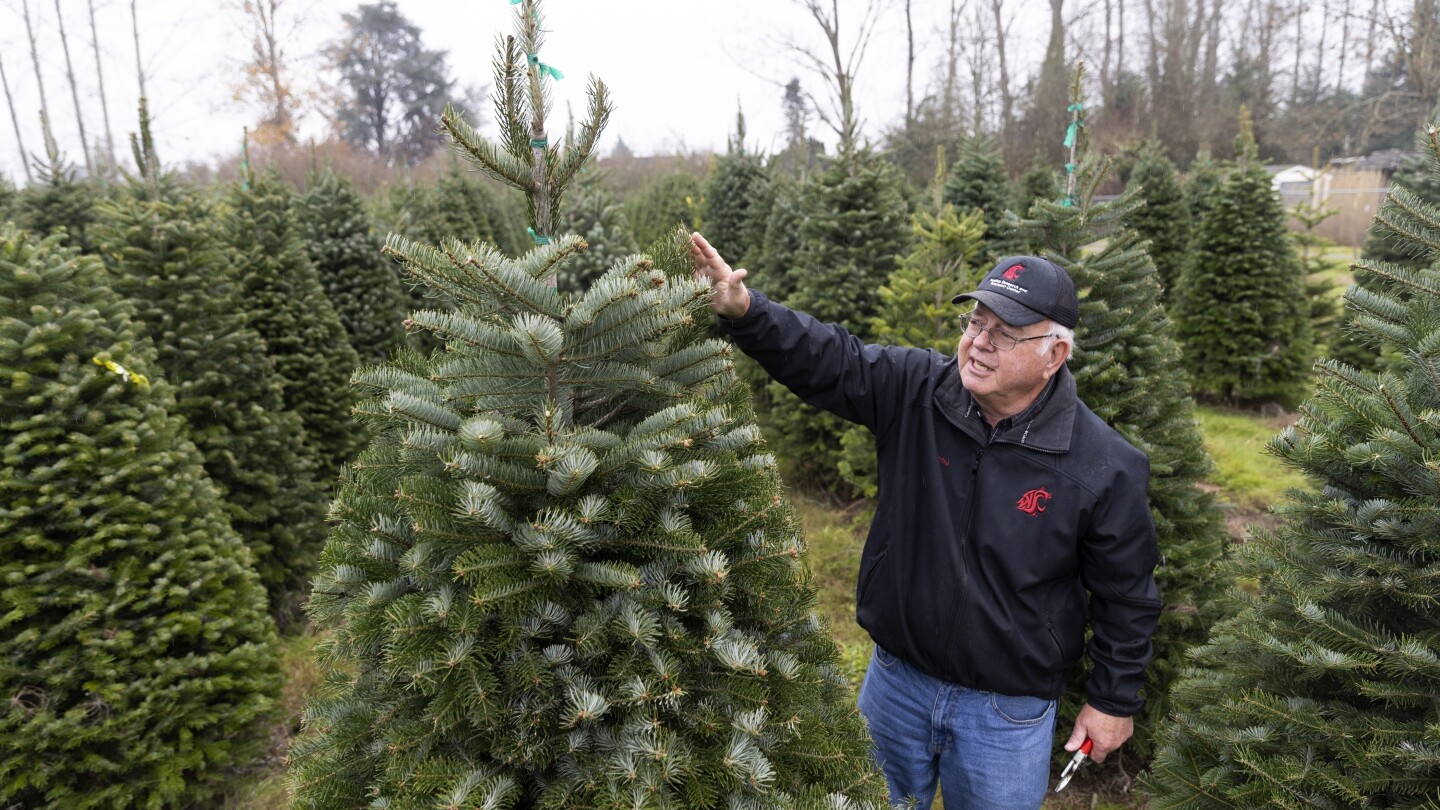CHICAGO (AP) — Christmas tree breeder Jim Rockis knows what it looks like when one dies long before it can reach a buyer.
Rockis farms trees in West Virginia and Pennsylvania, where he and other producers often grow their iconic evergreens outside their preferred habitat higher in the mountains. But that can mean planting in soil that’s warmer and wetter — places where a nasty fungal disease called Phytophthora root rot can take hold, sucking moisture away from saplings and causing needles to crisp to burnt orange.
“After a while, it just gets to the core of it,” Rockis said. “They just wither away.”
Christmas tree growers and breeders have long prepared for a future of hotter weather that will change soil conditions, too. People buying trees may not have noticed a difference in availability this year and may not even in the next couple; the average Christmas tree takes eight to 10 years to reach marketable size.
But that means the trees being grown right now are the beloved holiday traditions of tomorrow for millions of families.
“You’ve got to start thinking about how you are going to adapt to this,” Rockis said.
That’s why researchers like Gary Chastagner, a Washington State University professor called “Dr. Christmas Tree” for his decades of work on firs and other festive species, have been working with breeders like Rockis to see if species from other parts of the world — for instance, Turkish fir — are better adapted to conditions being wrought by climate change.
In the past two years, surprisingly high numbers of evergreens died of fungal disease outbreaks in Washington and Oregon. Chastagner has been concerned that changing soil temperature and moisture “may change the frequency at which we would see some Phytophthora that are more adapted to warmer soil conditions.” Some may attack trees even more aggressively, he added.
Chastagner and his team are doing more sampling work to understand the causes of these outbreaks and whether they represent a pattern that could extend into the future.
But some scientists say there isn’t enough research on warming soil temperatures that could affect Christmas trees and many other crops, especially trees.
A European study this year in the journal Nature Climate Change found that soil heat extremes are increasing faster than air heat extremes, which can affect the health of grasslands, forests and some agricultural areas.
The same weather conditions that can put trees under stress favor many pests and diseases that can attack them, such as insects and fungi. The changes in forests and farm fields might not happen overnight, said Bert Cregg, a professor of horticulture and forestry at Michigan State University. But over time with a warming climate, “some trees may become more difficult to grow,” he said.
Changes in soils also have implications for soil carbon storage, a climate change solution that the U.S. has already put a lot of money and effort into researching. Warmer soil temperatures reduce its long-term carbon storage ability, partly because microscopic life underground is affected, researchers say.
“The activity of these microbes usually increases with temperature, so it’s less stable to store carbon there,” said Almudena Garcia-Garcia, one of the Nature Climate Change authors and a postdoctoral scientist at the Helmholtz Center for Environmental Research — UFZ in Leipzig, Germany.
Gary Chastagner, a Washington State University professor called “Dr. Christmas Tree” shows Turkish fir trees grown from seedlings to find ways to produce disease and insect-resistant Christmas trees at the school’s Puyallup Research and Extension Center on Thursday, Nov. 30, 2023, in Puyallup, Wash. Chastagner has been working with breeders to see if species from other parts of the world — for instance, Turkish fir — are better adapted to conditions being wrought by climate change. (AP Photo/Jason Redmond)
Although getting more information on how changing soils will affect crops and carbon alike is vital, scientists sometimes struggle to get enough data, said Melissa Widhalm, associate director and regional climatologist at Purdue University’s Midwestern Regional Climate Center. Since soil temperature is measured differently than air temperature, the records don’t go back very far, making it difficult to understand long-term trends.
Widhalm, who was not involved with the Nature Climate Change research, said she wished more studies like it existed in other places like North America, and that the results are compelling because they combined physical observations in the ground with satellite data and computer simulations. “This paper did a nice job quantifying soil temperature-moisture relationships that scientists know exist but are difficult to measure,” she said.
Garcia-Garcia said her team plans to study soil temperature changes more in the future, in more locations if they can. “All the sources of information indicate this is happening,” she said. “We are always studying extreme events from measurements in the air. But what is happening below our feet?”
___
Read more of AP’s climate coverage at http://www.apnews.com/climate-and-environment
___
Follow Melina Walling on X: @MelinaWalling.
___
Associated Press climate and environmental coverage receives support from several private foundations. See more about AP’s climate initiative here. The AP is solely responsible for all content.

